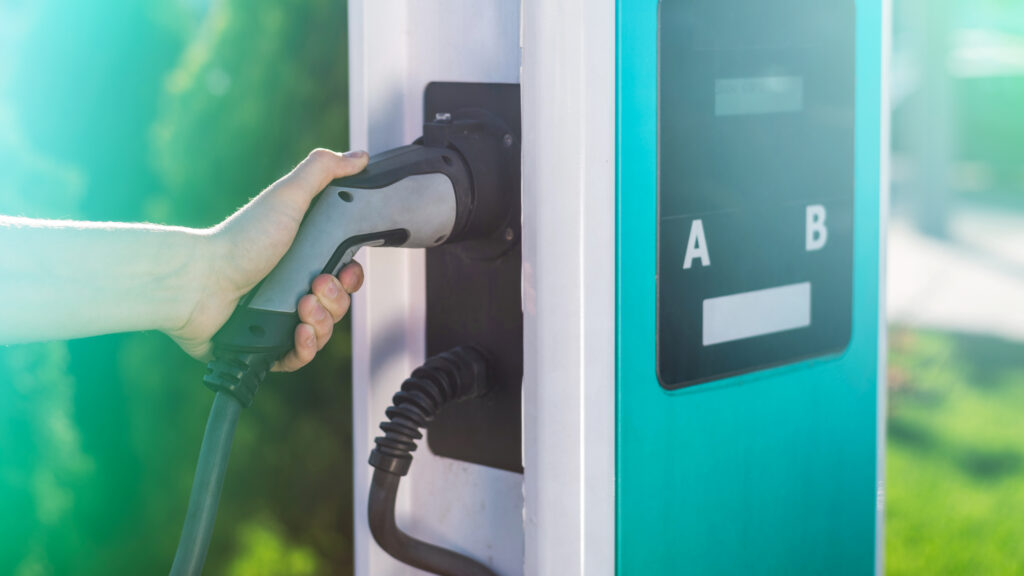Electric Car Savings Calculator UK: Calculate Your Real Savings
Table of Contents
Table of Contents
Wondering exactly how much you could save by switching to an electric car? With petrol prices still fluctuating and energy costs dominating headlines, many UK drivers are turning to electric car savings calculators to crunch the numbers before making the switch.
The reality is both encouraging and complex. While the average UK driver can save £800-£1,500 annually by switching from petrol to electric, your personal savings depend on numerous factors including your driving patterns, current vehicle, energy tariff, and charging habits.
Electric car savings calculators UK have become essential tools for prospective EV buyers, but not all calculators are created equal. Many oversimplify the calculation or use outdated pricing data, leading to unrealistic expectations or missed savings opportunities.
In this comprehensive guide, we’ll show you exactly how to calculate your potential EV savings using the most accurate methods and current UK data. Whether you’re considering your first electric car or comparing specific models, you’ll have the tools to make confident financial decisions based on real numbers.
Why You Need an Accurate EV Savings Calculator
The decision to switch to electric involves significant financial considerations that extend far beyond simple fuel cost comparisons. Electric car cost calculators help you understand the complete financial picture, but accuracy is crucial for making informed decisions.
The Problem with Simplified Calculators
Many online EV savings calculators focus solely on fuel cost differences, ignoring crucial factors like maintenance savings, insurance variations, and government incentives. This oversimplification can lead to unrealistic expectations or missed opportunities.
Common calculation errors include:
- Using national average fuel prices instead of regional variations
- Ignoring time-of-use electricity tariffs that can halve charging costs
- Overlooking maintenance cost differences between electric and petrol vehicles
- Failing to include government incentives and tax benefits
- Using outdated pricing data that doesn’t reflect current market conditions
What Accurate Calculations Should Include
A comprehensive electric vehicle savings calculator must consider multiple cost categories to provide realistic projections:
Fuel and Energy Costs: Current petrol prices versus electricity costs, including regional variations and time-of-use tariffs that can dramatically impact savings.
Purchase Price Differences: Initial cost differences between comparable electric and petrol models, factoring in available grants and incentives.
Maintenance and Servicing: Annual servicing costs, component replacement frequencies, and warranty differences that significantly impact long-term ownership costs.
Tax and Regulatory Costs: Road tax differences, congestion charges, clean air zone exemptions, and company car tax benefits.
Insurance and Depreciation: Premium differences and resale value projections that affect total cost of ownership.
Step-by-Step EV Savings Calculation Method

Creating your own electric car savings calculator UK ensures you’re using the most current data and factors specific to your situation. Here’s how to calculate your potential savings accurately.
Step 1: Calculate Current Petrol Costs
Start by determining your current annual fuel expenses using accurate consumption data.
Annual Mileage: Record your actual annual mileage from MOT certificates or service records rather than estimates.
Fuel Consumption: Use your car’s real-world mpg figure from recent fuel receipts rather than manufacturer claims. Track several fill-ups for accuracy.
Current Fuel Costs: Use local petrol prices rather than national averages. Prices can vary by 10-15p per litre between regions.
Example Calculation:
- Annual mileage: 10,000 miles
- Real-world fuel economy: 35mpg
- Local petrol price: £1.45/litre
- Annual fuel cost: £1,885
Step 2: Calculate Electric Car Energy Costs
Determine your potential electricity costs using current tariff rates and realistic consumption figures.
Vehicle Efficiency: Research the official WLTP energy consumption for your target EV, typically 3-4 miles per kWh for most models.
Electricity Tariff: Use your actual tariff rate, not national averages. Consider time-of-use tariffs like Economy 7 or specialist EV tariffs.
Charging Mix: Estimate your home versus public charging split. Most UK EV owners charge 80-90% at home.
Example Calculation:
- Annual mileage: 10,000 miles
- EV efficiency: 3.5 miles per kWh
- Home charging (80%): 2,286kWh at 25p/kWh = £571
- Public charging (20%): 571kWh at 55p/kWh = £314
- Total annual energy cost: £885
- Annual fuel savings: £1,000
Step 3: Factor in Purchase Price Differences
Calculate the impact of higher EV purchase prices on your total cost of ownership.
Price Premium: Research current prices for comparable models. EV premiums typically range from £3,000-£8,000.
Financing Costs: If financing, calculate interest costs on the additional borrowing required for the EV.
Government Incentives: Include any available grants, though most direct purchase incentives ended in 2022.
Example Calculation:
- EV premium: £5,000
- Finance rate: 6% APR over 4 years
- Additional annual cost: £1,442
- Net annual benefit after purchase costs: -£442 (Year 1-4)
Step 4: Include Maintenance Savings
Electric vehicles typically require significantly less maintenance than petrol cars, creating substantial long-term savings.
Annual Servicing: EVs typically cost £150-£300 annually versus £300-£600 for petrol cars.
Component Longevity: Electric motors have fewer moving parts, reducing component replacement needs.
Brake Wear: Regenerative braking significantly extends brake pad life in EVs.
Example Calculation:
- Current petrol servicing: £450 annually
- EV servicing estimate: £200 annually
- Annual maintenance savings: £250
Step 5: Calculate Tax and Regulatory Benefits
Government policies create additional savings for EV owners through various tax advantages and exemptions.
Road Tax (VED): EVs pay £0 annually versus £165+ for petrol cars (plus luxury car supplements).
Company Car Tax: 0% Benefit-in-Kind for EVs versus 20-37% for petrol cars creates substantial savings for business users.
Congestion Charges: London drivers save £15 daily (Congestion Charge) plus £12.50 (ULEZ), totaling £2,000-£4,000 annually for regular city drivers.
Example Calculation:
- Road tax saving: £165 annually
- Occasional London driving: £200 annually
- Annual tax savings: £365
Using Online EV Savings Calculators Effectively

While creating your own calculations ensures accuracy, several online electric car savings calculators UK can provide quick estimates if used properly.
Recommended Calculator Tools
What Car? Cost Calculator: Provides comprehensive total cost of ownership comparisons using current UK pricing data and includes maintenance, tax, and depreciation factors.
Pod Point Savings Calculator: Focuses specifically on charging costs with detailed tariff options and regional pricing variations.
Energy Saving Trust Calculator: Government-backed tool providing conservative estimates based on official data sources.
How to Improve Calculator Accuracy
Input Real Data: Use actual mileage, local fuel prices, and specific vehicle models rather than defaults.
Update Regularly: Fuel and electricity prices change frequently. Recalculate every 3-6 months for accuracy.
Consider Multiple Scenarios: Run calculations for different annual mileages and charging patterns to understand sensitivity.
Validate Results: Cross-check calculator results against manual calculations to identify potential errors.
Real-World Savings Examples
Understanding how EV cost calculators translate to real-world savings helps validate your calculations and set realistic expectations.
Example 1: Average UK Commuter
Profile: 12,000 miles annually, mostly local driving, home charging available
Current Vehicle: Ford Focus 1.0 EcoBoost (42mpg real-world)
- Annual fuel cost: £1,885
- Annual servicing: £350
- Road tax: £165
Target EV: Nissan Leaf (3.2 miles/kWh)
- Annual energy cost: £900 (home charging)
- Annual servicing: £200
- Road tax: £0
Annual Savings: £1,300 Break-even period: 3.8 years (assuming £5,000 EV premium)
Example 2: High-Mileage Driver
Profile: 20,000 miles annually, mix of local and motorway driving
Current Vehicle: BMW 320d (48mpg real-world)
- Annual fuel cost: £2,770
- Annual servicing: £500
- Road tax: £165
Target EV: BMW i4 (3.5 miles/kWh)
- Annual energy cost: £1,300 (70% home, 30% public charging)
- Annual servicing: £250
- Road tax: £0
Annual Savings: £1,885 Break-even period: 2.7 years (assuming £5,000 EV premium)
Example 3: City Driver
Profile: 6,000 miles annually, frequent London driving, no home charging
Current Vehicle: Mini Cooper (38mpg real-world)
- Annual fuel cost: £1,200
- Annual servicing: £400
- Road tax: £165
- Congestion/ULEZ charges: £1,500
Target EV: Mini Electric (3.8 miles/kWh)
- Annual energy cost: £850 (public charging only)
- Annual servicing: £200
- Road tax: £0
- Congestion/ULEZ charges: £0
Annual Savings: £2,215 Break-even period: 2.2 years (assuming £5,000 EV premium)
Common Calculation Mistakes to Avoid
Even the best electric vehicle savings calculators can produce misleading results if used incorrectly. Here are the most common errors to avoid.
Using Unrealistic Assumptions
Manufacturer MPG Figures: Real-world fuel economy is typically 15-25% lower than official figures. Use actual consumption data from fuel receipts.
Perfect Home Charging: Assuming 100% home charging ignores reality. Most EV owners use public charging 10-30% of the time.
Static Fuel Prices: Fuel and electricity prices fluctuate. Use current prices and consider potential future changes.
Ignoring Hidden Costs
Home Charging Installation: Initial setup costs of £500-£1,500 aren’t typically included in calculators but affect first-year economics.
Insurance Premiums: EV insurance can cost 10-20% more than petrol equivalents, though this gap is narrowing.
Opportunity Cost: The EV purchase premium could be invested elsewhere, generating returns that offset some savings.
Oversimplifying Comparisons
Like-for-Like Models: Comparing a premium EV with a basic petrol car skews results. Match similar specification levels.
Lifecycle Considerations: Battery replacement costs after 8-10 years could impact long-term economics, though most warranties cover this period.

Frequently Asked Questions
How accurate are online electric car savings calculators? Online calculators vary significantly in accuracy. The best tools use current UK pricing data and include comprehensive cost factors, while simpler calculators may overstate savings by focusing only on fuel costs. Always validate results with manual calculations using your specific circumstances.
What should I include in my EV savings calculation? Comprehensive calculations should include fuel/energy costs, purchase price differences, maintenance savings, tax benefits, insurance changes, and depreciation factors. Don’t forget regional variations in pricing and charging infrastructure access.
How often should I recalculate potential EV savings? Recalculate every 3-6 months as fuel prices, electricity tariffs, and vehicle prices change frequently. Major life changes like house moves or job changes also warrant recalculation.
Do EV savings calculators account for government incentives? Quality calculators include current incentives like company car tax benefits and congestion charge exemptions. However, many miss regional incentives or workplace benefits, so research these separately.
Why do different calculators give different results? Calculators use different assumptions, data sources, and calculation methods. Variables like regional pricing, charging mix assumptions, and included cost categories can significantly impact results.
Making Your EV Decision with Confidence
Electric car savings calculators UK provide valuable insights, but they’re just one tool in your decision-making process. The most accurate approach combines online calculators with personal manual calculations using your specific circumstances and current market data.
Remember that EV savings increase over time as you benefit from ongoing fuel savings while the higher purchase price becomes less significant. Most UK drivers find that electric cars become cost-effective within 3-4 years, with high-mileage drivers seeing benefits even sooner.
The key to accurate calculations lies in using realistic assumptions, current pricing data, and comprehensive cost factors. Don’t rely solely on fuel cost comparisons – include maintenance, tax, and other factors that significantly impact total ownership costs.
Ready to calculate your potential savings? Start with a reputable online calculator, then validate the results with manual calculations using your actual driving patterns and local pricing. This approach ensures you make an informed decision based on realistic expectations rather than overly optimistic projections.


